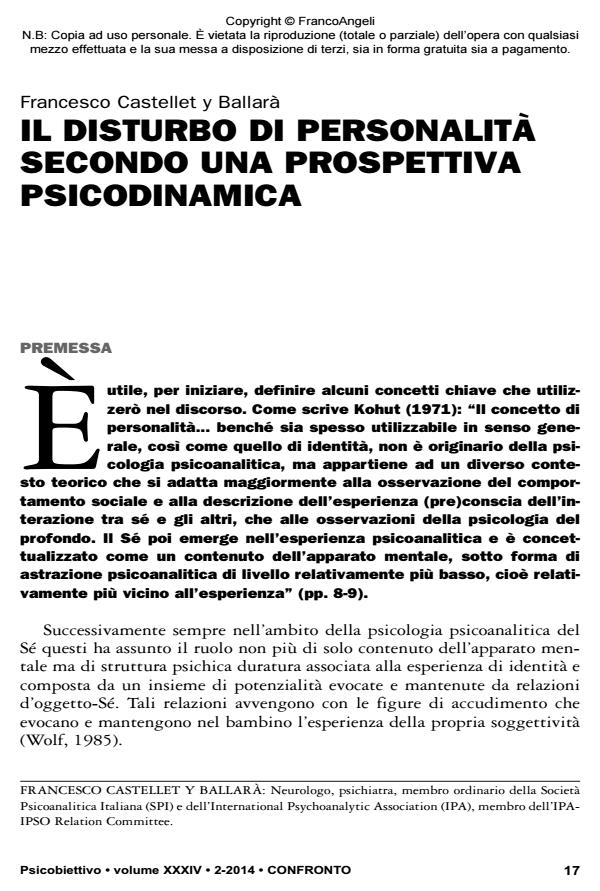Personality disorders from a psychodynamic perspective
Journal title PSICOBIETTIVO
Author/s y Ballarà Francesco Castellet
Publishing Year 2014 Issue 2014/2
Language Italian Pages 12 P. 17-28 File size 543 KB
DOI 10.3280/PSOB2014-002002
DOI is like a bar code for intellectual property: to have more infomation
click here
Below, you can see the article first page
If you want to buy this article in PDF format, you can do it, following the instructions to buy download credits

FrancoAngeli is member of Publishers International Linking Association, Inc (PILA), a not-for-profit association which run the CrossRef service enabling links to and from online scholarly content.
After an initial clarification of the meaning of crucial concepts such as Personality, Identity and Self that pertain to different realms but are also close one to another, the Author specifies how only the Self is a truly psychoanalytic concept. Furthermore the Author provides a discussion of the widespread and abusive use of the DSM in the field of the mental health despite the evident failures and limitation of its use on the field of clinical setting due to its categorial structured approach to the diagnosis. A failure implicitly admitted with the abandonment of the multi axial diagnosis in the recently delivered last revision: the DSM 5. In fact a functional vs. categorial diagnosis is the only diagnostic method compatible with the current psychodynamic view of the human mind/soul. The functional diagnosis privileges a view of mental pain and illness as distributed along a spectrum from normality to pathology where the individual with his or her unique life story and personal relations are crucial.
Keywords: Personality Disorders; Psychodynamic Theories; Inter-subjectivity; Self; Multiple Selves; Dissociation; DSM 5.
y Ballarà Francesco Castellet, Il disturbo di personalità secondo una prospettiva psicodinamica in "PSICOBIETTIVO" 2/2014, pp 17-28, DOI: 10.3280/PSOB2014-002002